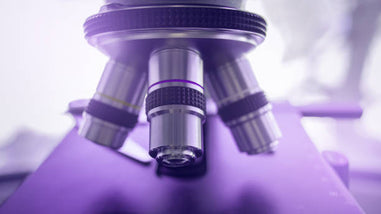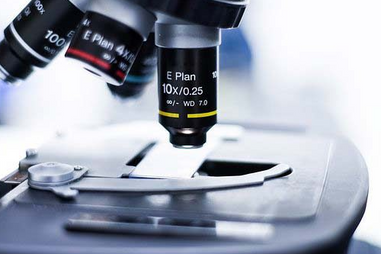- No products in the cart.
Stereo inspection microscopes, also known as dissecting microscopes, are known for their low magnification power, a three-dimensional visual perspective, and their comfortable working distance. The secret to the depth perception of stereo microscopes lies in the presence of two separate eyepieces, mimicking the natural human eyes and its visual imaging.
Unlike its more high-powered counterparts like the light microscope and the electron microscope, the stereo inspection microscope has a much lower magnification power. Thus, this microscope is not used for observing microorganisms and cellular organelles; it's used for the easy manipulation of a specimen or in the production or repair of devices. This device allows for detailed work such as in microsurgery, watchmaking, and production of medical device parts.
Producing medical device parts involves increasing the magnification to make sure that the tiny details are in order. The stereo microscope is an excellent solution for this. Not only that, but the stereo microscope also provides a working area that makes it easier for the observer to manipulate the device being worked on.
 lenses is much like the human eyes, making it easier and more natural to work with the device. Not only that but the top tube lens also often comes with magnification, usually set at 10x, to better enhance the specimen being worked on. The total power magnification is computed by multiplying the magnification level of the top tube lens and the chosen objective lens.
lenses is much like the human eyes, making it easier and more natural to work with the device. Not only that but the top tube lens also often comes with magnification, usually set at 10x, to better enhance the specimen being worked on. The total power magnification is computed by multiplying the magnification level of the top tube lens and the chosen objective lens.
For over 40 years, Lab Pro Inc. has been committed to providing stereo inspection microscopes in California and worldwide. To learn more, visit the biggest Lab Supply showroom in California, or contact us online or at 888-452-2776.
Unlike its more high-powered counterparts like the light microscope and the electron microscope, the stereo inspection microscope has a much lower magnification power. Thus, this microscope is not used for observing microorganisms and cellular organelles; it's used for the easy manipulation of a specimen or in the production or repair of devices. This device allows for detailed work such as in microsurgery, watchmaking, and production of medical device parts.
Producing medical device parts involves increasing the magnification to make sure that the tiny details are in order. The stereo microscope is an excellent solution for this. Not only that, but the stereo microscope also provides a working area that makes it easier for the observer to manipulate the device being worked on.
Understanding Stereo Inspection Microscopes: Advantages
The stereo inspection microscope comes with a lot of advantages, most of it is due to its magnifying power and ease of use. Here are four of the top advantages of using stereo microscopes, especially for manipulating medical devices.Magnification
The magnification of a stereo microscope may not be as powerful as its counterparts. However, this is because the stereo microscope is mainly intended to manipulate relatively big devices, not microorganisms. The stereo inspection microscope is usually used for viewing large specimens, observing the surfaces of rocks and crystals, or operating on circuit boards for medical devices.Dual Power Magnification
Stereo inspection microscopes come with dual lenses that give the three-dimensional view needed for the manipulation of objects. The presence of two
Zoom Magnification
Similar to other types of microscopes, magnification is one of the primary uses of the stereo inspection microscope. The most common levels of magnification are 10x, 20x, 30x, and 40x. The magnification can be changed by simply rotating the revolving nose piece that holds the objectives in place. Most microscope nose pieces come with built-in detents or click stops when the chosen objective lens is properly in place and line of vision.Top and Bottom Light Sources
When it comes to light sources, the stereo microscope is different from other types of microscopes because it has two: one on top, and one below the specimen. The top light source is used for viewing and working on surfaces and solid or opaque objects. The bottom light source, on the other hand, is used for transparent objects and specimens. While most stereo microscope applications only require the top light source, the bottom light source is still a good addition to provide better illumination and visual accuracy, especially in dealing with small objects.Choosing the Right Stereo Inspection Microscope
With the increasing number of stereo microscope models and competitors in the market, choosing the right stereo microscope can be quite challenging. To make this task easier, here are the things you should consider when choosing the right model for you:Specifications
The main specifications of stereo microscopes that you should pay attention to are the magnification, resolution, and illumination. Magnification refers to the ability of the device to see smaller objects: the higher the magnification, the smaller the details you will be able to observe. The resolution, also referred to as the resolving power, is the ability of the microscope to separate adjacent objects from each other. Most stereo microscopes are designed for low magnification, or only up to 100x.Work Requirement
It's very important to understand the nature of the work you will be doing with the stereomicroscope. If you're working in the production of medical devices, the model of microscope you should choose is one that has the magnification power, working area, and light source that applies to your work. If you are only using the stereo microscope for viewing, then a model with a small working area might be best for you. However, if you will be using the microscope for manipulation objects, then you'll want to find a model with enough illumination as well as a big working area.Stereo Inspection Microscopes: Manipulating Small Objects in Three Dimensions
While other microscopes are meant only for viewing and observing, the stereo inspection microscope can be used for manipulating small objects and specimens, creating an incredibly versatile device that is used not only in science but also in technological endeavors.For over 40 years, Lab Pro Inc. has been committed to providing stereo inspection microscopes in California and worldwide. To learn more, visit the biggest Lab Supply showroom in California, or contact us online or at 888-452-2776.












































